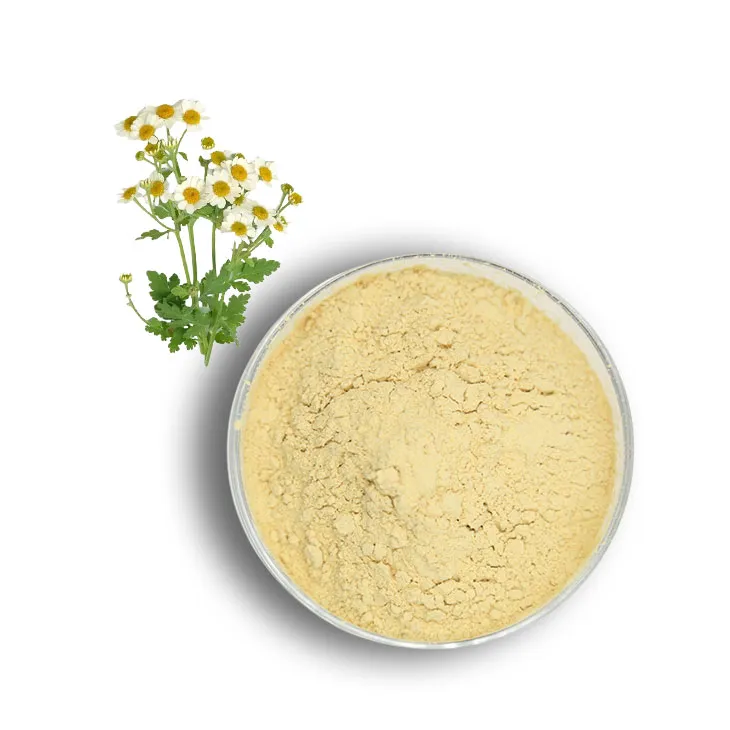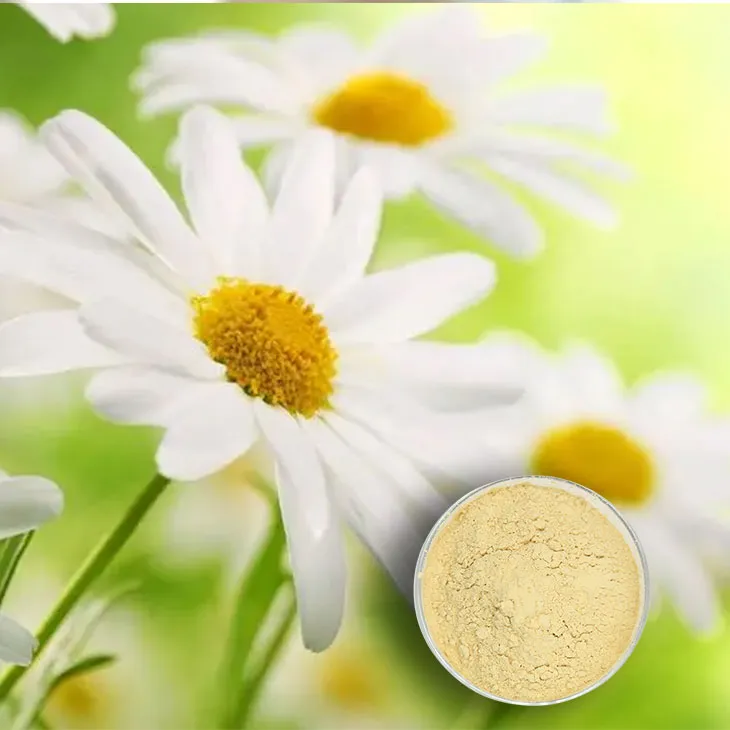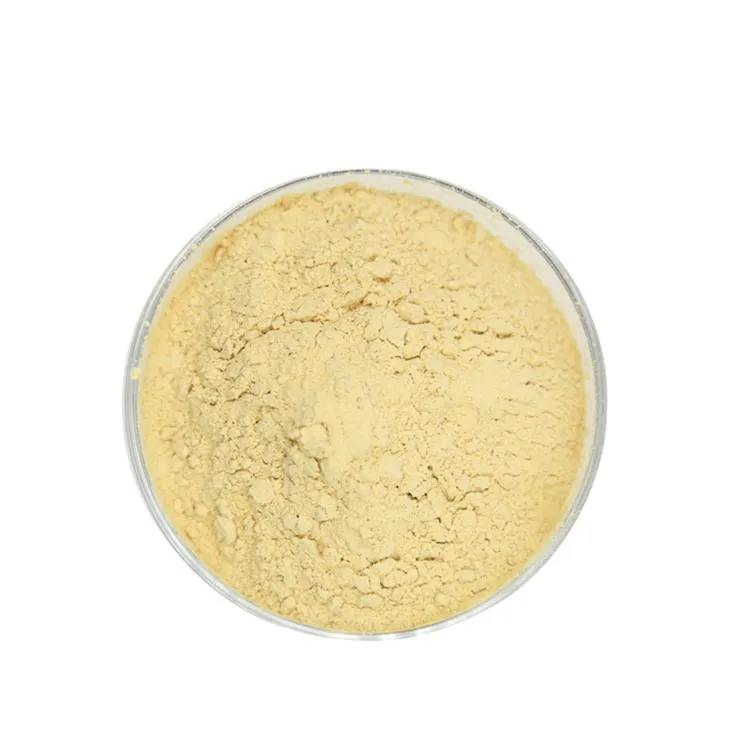- 0086-571-85302990
- sales@greenskybio.com
How to Extract Feverfew Extract from Plants?
2024-11-28

1. Introduction
Feverfew (Tanacetum parthenium) is a well - known plant with potential medicinal properties. The extraction of its extract, especially the white Feverfew Extract, is of great interest due to its possible applications in medicine and cosmetics. This article will detail the processes involved in extracting Feverfew Extract from plants.

2. Collection of Feverfew Plants
The first step in extracting Feverfew Extract is the collection of the plants. This process needs to be carried out at the appropriate time.
2.1. Timing Considerations
- The best time to collect feverfew plants is usually during their flowering period. At this time, the plants are likely to have a higher content of the desired compounds.
- It is important to avoid collecting plants during periods of extreme weather, such as immediately after heavy rain or during a drought. Extreme weather can affect the quality and quantity of the compounds in the plants.
2.2. Selective Collection
- Only healthy and mature plants should be collected. Diseased or damaged plants may contain lower levels of the active compounds or may even have contaminants.
- When collecting, care should be taken not to damage the surrounding environment. Avoid over - harvesting from a single area to ensure the sustainable growth of feverfew plants in the wild.

3. Preparation of the Plants for Extraction
Once the feverfew plants are collected, they need to be prepared for the extraction process.
3.1. Cleaning
- The collected plants should be carefully cleaned to remove any dirt, debris, or insects. This can be done by gently rinsing the plants with clean water.
- After rinsing, the plants should be dried gently. Excessive moisture can interfere with the extraction process and may lead to the growth of mold during extraction.
3.2. Cutting into Small Pieces
- The dried and clean feverfew plants are then cut into small pieces. This increases the surface area of the plant material, which is beneficial for the extraction process.
- The size of the small pieces should be relatively uniform. This ensures that all parts of the plant are exposed to the solvent evenly during extraction.

4. The Extraction Process
There are several methods for extracting feverfew extract from the prepared plant material. One of the main techniques is maceration.
4.1. Maceration
- Place the cut feverfew plant pieces in a suitable container. A glass container is often a good choice as it is inert and does not react with the solvent or the plant compounds.
- Add a solvent, such as ethyl acetate, to the container. The amount of solvent should be sufficient to cover the plant material completely. Ethyl acetate is a commonly used solvent for plant extraction because it has a relatively low toxicity and can dissolve a wide range of plant compounds.
- Stir the mixture regularly. This can be done manually or using a mechanical stirrer. Stirring helps to enhance the extraction efficiency by ensuring that the solvent comes into contact with all parts of the plant material. The frequency of stirring can be every few hours, depending on the specific extraction conditions.
- Allow the maceration process to continue for an appropriate period of time. This can range from several hours to several days. The duration depends on factors such as the nature of the plant material, the solvent used, and the desired extraction efficiency.
4.2. Other Extraction Methods
- Soxhlet extraction is another method that can be used. In Soxhlet extraction, the plant material is placed in a Soxhlet apparatus, and the solvent is continuously recycled through the plant material. This method can be more efficient for some types of plant extractions, but it also requires more complex equipment.
- Ultrasonic - assisted extraction is a relatively new technique. In this method, ultrasonic waves are applied to the plant - solvent mixture. The ultrasonic waves create cavitation bubbles in the solvent, which can enhance the extraction efficiency by disrupting the plant cell walls and facilitating the release of the compounds into the solvent.

5. Separation of the Extract
After the extraction process, the next step is to separate the liquid extract from the plant debris.
5.1. Centrifugation
- Transfer the macerated mixture to centrifuge tubes. Make sure to balance the tubes properly to avoid any damage to the centrifuge.
- Centrifuge the tubes at an appropriate speed and for a suitable time. The speed and time of centrifugation depend on the nature of the plant material and the density of the extract. Generally, a higher speed can be used for a shorter time, but this needs to be optimized for each extraction.
- After centrifugation, the liquid extract will be separated from the solid plant debris. The liquid can be carefully decanted or aspirated from the centrifuge tubes.
5.2. Filtration
- Filtration can also be used as an alternative or complementary method to centrifugation. A filter paper or a membrane filter can be used.
- For coarse filtration, filter paper with a larger pore size can be used first to remove the larger plant debris. Then, a membrane filter with a smaller pore size can be used for finer filtration to remove any remaining small particles.

6. Purification of the Extract
Once the extract is separated from the plant debris, it usually needs to be purified to obtain a high - quality white feverfew extract.
6.1. Column Chromatography
- Prepare a column for chromatography. The column can be filled with a suitable stationary phase, such as silica gel or alumina. The choice of stationary phase depends on the nature of the compounds to be separated in the extract.
- Load the extract onto the top of the column. The extract should be dissolved in a suitable solvent before loading.
- Elute the column with a series of solvents with different polarities. As the solvents pass through the column, the different components in the extract will be separated based on their affinities for the stationary phase and the solvents. The fractions containing the desired white feverfew extract can be collected.
6.2. Other Purification Methods
- Recrystallization can be used for purifying the extract if the desired compound can be crystallized. The extract is dissolved in a suitable solvent, and then the solvent is slowly evaporated or cooled to allow the compound to crystallize out. The crystals can be separated from the remaining solution to obtain a purer product.
- Distillation can be applied in some cases, especially if the extract contains volatile compounds. By distilling the extract, the volatile compounds can be separated from the non - volatile ones based on their different boiling points.
7. Conclusion
The extraction of white feverfew extract from plants is a multi - step process that involves collection, preparation, extraction, separation, and purification. Each step is crucial for obtaining a high - quality extract that may have potential applications in medicine and cosmetics. By following the proper procedures and using appropriate techniques, researchers and producers can ensure the efficient extraction and purification of feverfew extract.
FAQ:
1. What is the best time to collect feverfew plants for extraction?
The best time to collect feverfew plants for extraction may vary depending on factors such as the growth cycle of the plant and the concentration of the desired compounds. Generally, it is advisable to collect them when the plants are in their prime growth phase, which is often when they have fully developed leaves and are healthy. However, specific research on the optimal time for feverfew collection may be required for the most effective extraction.
2. Why is ethyl acetate chosen as a solvent for maceration?
Ethyl acetate is often chosen as a solvent for maceration of feverfew plants because it has several favorable properties. It has a relatively low toxicity, which is important for safety during the extraction process. Additionally, it is a good solvent for many of the bioactive compounds present in feverfew, allowing for efficient extraction. It also has a moderate polarity that can dissolve a wide range of compounds, making it suitable for extracting different components from the plant material.
3. How long should the maceration process last?
The duration of the maceration process can vary. It depends on factors such as the size of the plant pieces, the type of solvent used, and the desired extraction efficiency. In general, maceration can last from a few hours to several days. Shorter maceration times may be sufficient for obtaining a relatively crude extract, while longer times may be required for more complete extraction of all the desired compounds. Experimentation may be needed to determine the optimal maceration time for a specific extraction purpose.
4. What are the advantages of using column chromatography for purification?
Column chromatography offers several advantages for purifying the feverfew extract. It can effectively separate different components based on their chemical properties such as polarity and molecular size. This allows for the isolation of the desired compounds in a relatively pure form. It also has a relatively high resolution, meaning it can distinguish between closely related compounds. Moreover, it can be scaled up or down depending on the amount of extract to be purified, making it a flexible purification method for both laboratory - scale and larger - scale extractions.
5. What are the potential applications of white feverfew extract in medicine?
White feverfew extract has potential applications in medicine. It may have anti - inflammatory properties, which could be useful in treating conditions such as arthritis. It may also have analgesic effects, potentially helping to relieve pain. Additionally, some studies suggest that it could have applications in migraine prevention or treatment, although more research is needed to fully understand its mechanisms and effectiveness in these medical areas.
Related literature
- Extraction and Characterization of Bioactive Compounds from Feverfew"
- "The Medicinal Potential of Feverfew Extracts: A Review"
- "Optimization of Feverfew Extract Production for Cosmetic Applications"
- ▶ Hesperidin
- ▶ Citrus Bioflavonoids
- ▶ Plant Extract
- ▶ lycopene
- ▶ Diosmin
- ▶ Grape seed extract
- ▶ Sea buckthorn Juice Powder
- ▶ Fruit Juice Powder
- ▶ Hops Extract
- ▶ Artichoke Extract
- ▶ Mushroom extract
- ▶ Astaxanthin
- ▶ Green Tea Extract
- ▶ Curcumin
- ▶ Horse Chestnut Extract
- ▶ Other Product
- ▶ Boswellia Serrata Extract
- ▶ Resveratrol
- ▶ Marigold Extract
- ▶ Grape Leaf Extract
- ▶ New Product
- ▶ Aminolevulinic acid
- ▶ Cranberry Extract
- ▶ Red Yeast Rice
- ▶ Red Wine Extract
-
Withania Somnifera Extract
2024-11-28
-
Ginseng Root Extract
2024-11-28
-
Epimedium extract powder
2024-11-28
-
Acerola Juice Powder
2024-11-28
-
Angelica sinensis extract
2024-11-28
-
Soy Extract
2024-11-28
-
Avocado Extract Powder
2024-11-28
-
Chasteberry Extract
2024-11-28
-
Yam Extract
2024-11-28
-
Garcinia Cambogia Extract
2024-11-28





















